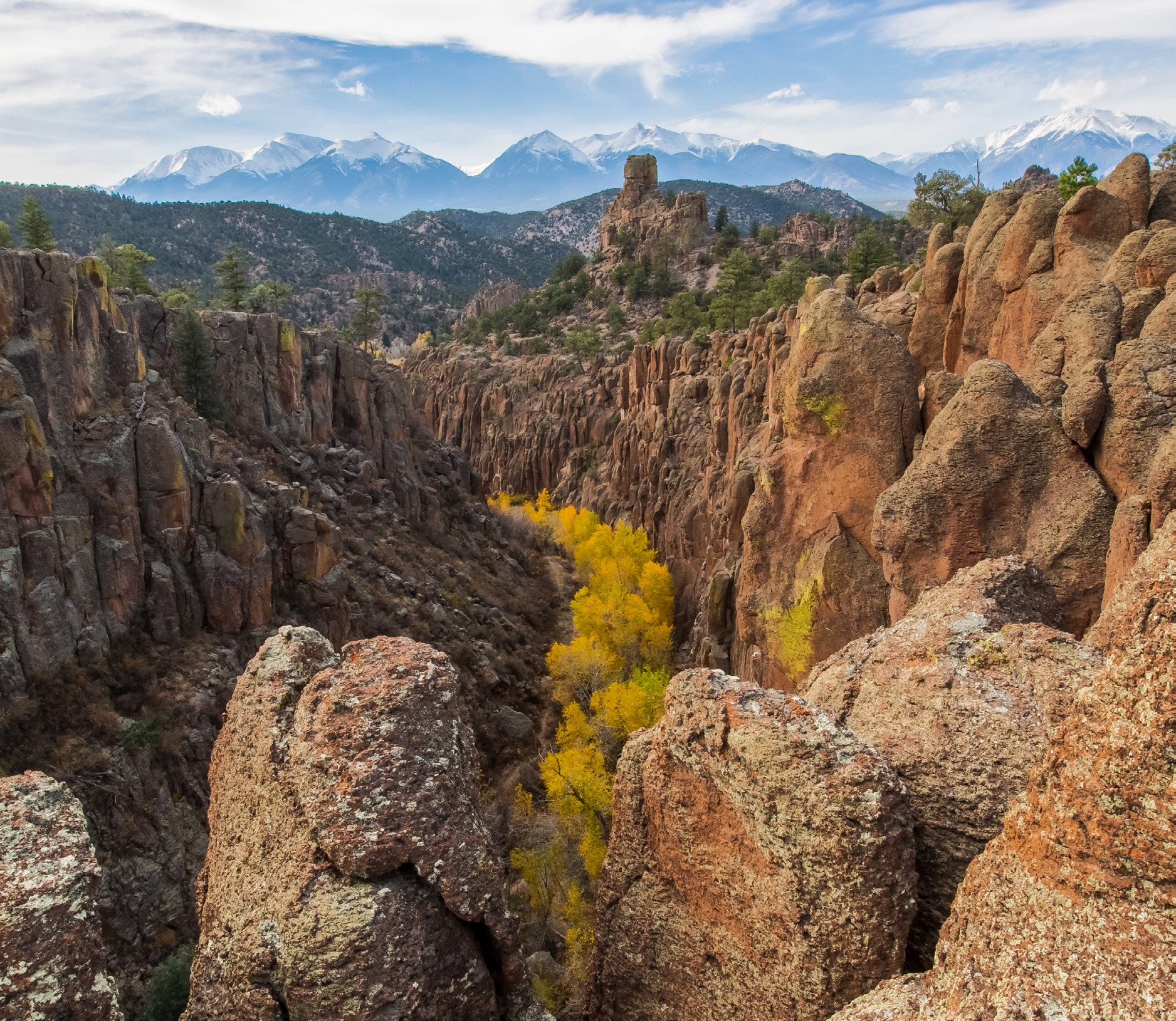Background/Overview
The Issue: The Browns Canyon National Monument, encompassing more than 21,000 acres of scenic and diverse natural resources along the upper Arkansas River in Chaffee County, Colorado, was designated for federal protection in 2015. The Bureau of Land Management (BLM) and the U.S. Forest Service (USFS) announced in May 2019 that they would accept public comment to assist with the development of a resource management plan for the monument. Local citizens needed assistance in ensuring local expertise and perspectives were included in the final management plan.
Keystone Policy Center facilitated discussions for the Friends of Browns Canyon and a coalition of Chaffee County citizens who wanted to offer recommendations for a federal resource management plan for the Browns Canyon National Monument.
Our Approach
In anticipation of the public comment period, Keystone Policy Center and the coalition of over 20 local citizens representing numerous organizations with diverse interests and experience, conducted a series of meetings to discuss a shared set of recommendations for the BLM and USFS. The result of those meetings was a comprehensive Sustainable Alternative Plan outlining numerous recommendations for the BLM and USFS.
“Our approach in developing the Sustainable Alternative was to review existing land-use designations and recommend how these existing designations could form the basis of a zoning approach for land use within [Browns Canyon National Monument]. This was necessary to ensure the monument is managed appropriately to protect the resources, objects and values that it was designated to protect. We considered known locations of monument objects as well as known areas of recreation and interest,” the coalition wrote in the executive summary of the Sustainable Alternative Plan.
The suggestions outlined in the plan addressed issues both within and outside of the planning effort laid out by the BLM and USFS. The coalition took this approach because the recommendations for land use in the area both directly and indirectly affect monument access and visitation as well as the resources, objects, and values the monument was established to protect.
Results
The result of those meetings was a comprehensive Sustainable Alternative Plan outlining the recommendations for the federal agencies. The Sustainable Alternative received technical advice from local, regional, and national organizations involved in the area who specialize in public land management. It had broad community support from over 80 local businesses, residents, landowners, and various regional and national organizations. It was submitted to the BLM and USFS on June 20, 2019 and was included in the public scoping report released by the agencies in July 2019.
In October 2019, BLM and USFS released the draft management plan which initiated a 90-day public comment period. The coalition members facilitated by Keystone analyzed the draft plan and crafted a response to include recommendations from the Sustainable Alternative Plan. In April 2020, BLM and USFS released the final proposed management plan and impact statement, which included virtually all of the proposed recommendations from the Sustainable Alternative Plan.


 Steven Williams is the Chief Executive Officer of PepsiCo North America, overseeing a more than $48 billion business that spans PepsiCo’s Foods and Beverage operating units. His leadership encompasses more than 125,000 associates and over 900 locations across the U.S. and Canada. Steven joined PepsiCo in 2001 as part of PepsiCo’s acquisition of the Quaker Oats Company, which he joined in 1997, and has held leadership positions of increased responsibility since.
Steven Williams is the Chief Executive Officer of PepsiCo North America, overseeing a more than $48 billion business that spans PepsiCo’s Foods and Beverage operating units. His leadership encompasses more than 125,000 associates and over 900 locations across the U.S. and Canada. Steven joined PepsiCo in 2001 as part of PepsiCo’s acquisition of the Quaker Oats Company, which he joined in 1997, and has held leadership positions of increased responsibility since.


